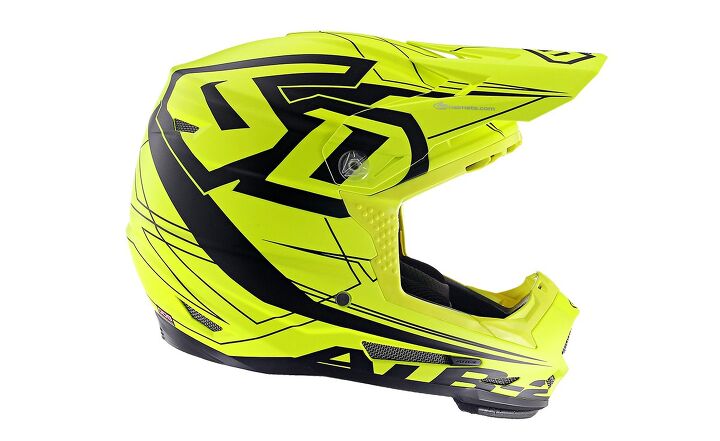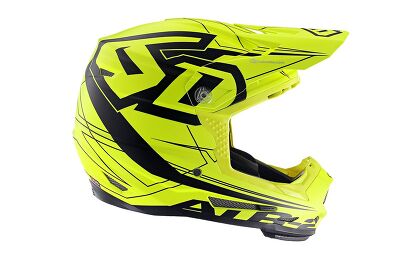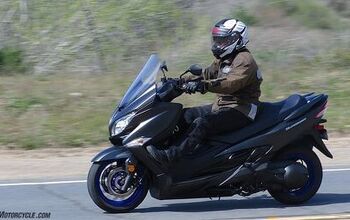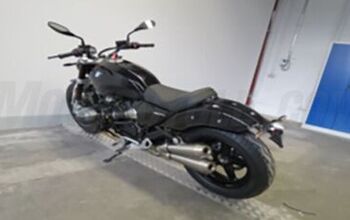6D Introduces A Highly Sophisticated Youth Helmet - The ATR-2Y

6D, the helmet manufacturer who made a name for itself by re-writing the rules when it comes to helmet design and rider safety, has introduced arguably the most advanced youth helmet on the market today – the ATR-2Y.
According to 6D, between 2000 and 2011 over 4 million injuries were reported. Of those, 11.3% were Head and Neck Injuries (HNI), with motocross registering the fourth highest injury total (78,236). Only skiing (83,313), Snowboarding (97,527), and skateboarding (129,600) ranked higher. What’s equally alarming is, at a single race event survey conducted by 6D, half the riders reported experiencing concussion-related symptoms from riding, and over 60% of those riders continued racing that day. To add even more numbers to think about; each year 1 million Americans sustain a concussion, 300,000 of which are sports related.
Obviously, the health and well being of our kids is of utmost importance, and considering how many participate in motocross events across the world, reducing their likelihood of concussions in a fall is a top priority. With the ATR-2Y, 6D has taken a big step in youth safety. At the risk of trying to explain the helmet’s features myself, I’ll let 6D do the talking from here:
INTRODUCING THE NEW ATR-2Y WITH ADVANCED ODS.
6D changed the helmet industry forever in 2013 with the introduction of the revolutionary ATR-1 off-road motorcycle helmet with its patented Omni-Directional Suspension (ODS) technology. 6D’s technology has been studied, analyzed, and tested by some of the greatest minds in head protection, and has proven itself effective all around the globe, and across multiple 6D helmet designs by now.
Introducing the all new ATR-2Y youth off-road competition helmet. Simply put, it’s the next level in brain protection for today’s youngest moto athletes. The 6D ATR-2Y follows directly in its parent’s footsteps. It is the most advanced helmet available for off-road motorcycle (or cycling) competition or recreational riding. Infused with the same advanced ODS technology as the adult ATR-2, the youth model was specifically designed for the needs of the growing child and their still-developing brain. Softer foam liners combined with a more aggressive and freer uncoupling carrier system, provide truly next level protection.
ADVANCED ODS: WHAT’S DIFFERENT AND WHY IS IT BETTER?
MULTI-IMPACT OUTER EPP (Expanded Polypropylene) LINER
6D strategically positioned the multi-impact EPP outer liner against the helmets shell’s inner surface. An exceptional energy absorption material, the EPP was specifically engineered with islands of EPP “Damping Towers” to assist in progressive loading of the ODS system during impacts. The multi-impact capability of the EPP is one of the key elements that allows the rebuilding* of the ATR-2Y after a moderate to severe impact. * Provided the helmet’s shell is not compromised from the impact event.
ODS CARRIER
The ODS carrier allowed the development of a modular helmet design that is easily rebuildable. The carrier also supports the isolation dampers and helps to manage the system materials during impact, compression, and shearing loads. ODS self-centers post impact.
REPLACEABLE INNER EPS
The inner EPS liner is the first layer of defense and a very important component of the new advanced ODS design. It is effectively a helmet within a helmet. It has its own in-molded PVC (Polyvinyl Chloride) shell that serves many functions. It nests into the ODS carrier, provides strength and integrity to the EPS, and serves as a slippery surface to aid in reducing angular acceleration forces. The EPS is a softer density than the EPP and is secured into the helmet with 4 locking pins that mate to the ODS carrier. It is also captured by the Chin Bar EPP which provides additional security.
LOW-FRICTION DISKS
Multiple smooth disks top the damping towers to reduce friction under loading thereby assisting in angular acceleration mitigation.
ELASTOMERIC ISOLATION DAMPERS
An array of Isolation Dampers connect the ODS carrier to the outer EPP liner and work in unison to isolate impact energy from the brain. The elastic properties of the dampers, combined with their unique shape provide a progressive spring rate that assists in managing low-threshold energy. The hour glass shape and the elastic properly also work to manage the 3-dimensional displacement of the inner liner.
OPTIMIZED SHELL DESIGN
The 6D concept of “Optimized Shell Design” does not define one element, but a system where multiple materials work together, in concert, to provide greater protection and energy management. The shell must have the structural integrity to prevent penetration, but it should not be overly stiff or rigid either. An overly stiff and rigid shell can seriously compromise the helmet’s energy management potential.
STRUCTURAL BROW RIB
A Structural Brow Rib provides incremental strength to the upper eyeport area providing additional integrity to the shell nearest the eyeport opening.
CERVICAL PROTECTION ZONE
A strategically designed Cervical Protection Zone nests inside the lower rear base of the helmet. This area is designed to provide a more compliant crushable region in the event the helmet is pushed down and back into the neck and spine during an accident.
EPP LINER CHIN BAR
The thicker lower density EPP lined chin bar is more durable and provides more energy absorbing material from side impacts to the jaw area. It also includes a sternum pad.
ATR-2Y FEATURES:
Rebuildable ODS System:
– Patented Omni-Directional Suspension® (ODS®)
– Improved ODS design mitigates Angular and Linear Accelerations
– Replaceable Inner EPS Liner
– Multi-impact EPP Outer Liner incorporates Isolation Damping Towers
– Rotational Energy Management Disks reduce Angular Acceleration
– Superior low, mid, and high velocity impact mitigation
– Air-Gap Ventilation System with 17 Transfer Ports
Features:
– Removable, washable comfort liner features Genuine Dri-Lex® anti-bacterial fabric
– Emergency Quick-Release Cheek Pads
– EPP lined chin bar includes Sternum Pad
– Goggle band integrated shell recess at the eyeport area improves goggle fit and seal
– Shear-Away Visor Screws designed to reduce angular acceleration potential
– Nose guard provides improved roost protection
– Light weight with improved center of gravity (+/- 1250 grams)
– Exceeds DOT and ASTM Standards
– 3-Year Limited Warranty
Shell:
– Optimized compliant light weight Tri-Composite Shell provides superior energy absorption
– Rear lower shell incorporates compliant zone at the cervical spine location
– Brow Rib increases shell integrity above the eyeport
– Clavicle Cut-Away provides increased clearance
– 9 Intake Ports and 6 Exhaust Ports work in unison with the Air Gap Ventilation System
World Wide Patents:
United States US 8,955,169 B2
Europe EP 2 672 853 B1
China ZL 201280017579.1
Patents Pending
HOW OMNI-DIRECTIONAL SUSPENSION WORKS:
At the onset of any impact, the ODS system’s isolation dampers activate immediately addressing the forces applied to the helmet. The isolation dampers compress and shear in response to the impact thereby reducing the transfer of that force to the inner helmet, head form, and brain. If the force applied to the helmet is more extreme, the isolation dampers transition the energy management job to the two energy absorbing compressible liners which are designed to manage higher velocity impacts in a more traditional manner. This dual-liner system allows ODS to manage impact forces in a superior manner to the other competing technologies in the marketplace.
LOW-THRESHOLD ENERGY
Recent medical research has provided alarming conclusions surrounding the causes, severity, and long-term effects of concussions. Even seemingly minor concussions may have much more serious long-term effects on the brain. Repetitive low-velocity impacts are cumulative apparently causing a buildup of tau proteins and deterioration of the brain’s healthy condition.
To meet the various mandatory global certification standards’ high-velocity requirements, helmets incorporating add-in shear plane technologies such as MIPS to address rotational force are still way too stiff to effectively absorb energy from impacts at lower velocities.
With this well noted, the vast majority of impacts one might experience in real-world accidents qualify as low-threshold energy impacts; impacts well below certification standards pass/fail velocities, but severe enough to sustain a concussion or a traumatic brain injury (TBI).
ODS starts working the instant any force is applied to the shell, making the helmet more compliant and progressive over the broad range of impact velocities experienced in the highest percentage of ‘real world’ crashes, while still exceeding the requirements of the global standards.
ANGULAR ACCELERATION
The medical community has determined that angular acceleration (rotational force generated during oblique-angle impacts) is the primary cause of concussion and traumatic brain injury.
Traditional helmets are directly “coupled” to the head preventing any ability to mitigate angular acceleration forces. Scientific laboratory testing proved that when subjected to identical impacts, a helmeted head sustained the same degree of angular acceleration as an un-helmeted head*.
ODS technology “uncouples” the helmet from the head form. The suspended dual-liner assembly compresses and shears omni-directionally when subjected to oblique impacts thereby reducing the transfer of angular acceleration forces to the head and brain.
Competing technologies including MIPS, Flex, Turbo 360, LDL, Meds, Fluid Pod, etc. are all trying to uncouple the relationship of the head and the helmet. Each however, is challenged with the same issue; the natural oval shape of the human head. That shape restricts movement. While some of these technologies function better than others, none provide the well-rounded performance of Omni-Directional Suspension. * Experiments conducted by David C. Viano, PhD, Bioengineering Center, Wayne State University.
BROAD RANGE PROTECTION
Across the entire range of potential impact velocities, the 6D ATR-2Y helmet with ODS technology consistently outperforms competitive designs. 6D extensively engineers the shell, liners, damper systems, and ODS to provide the best possible impact mitigation performance across all impact velocities for both angular and linear accelerations.
TIME-TO-PEAK (TTP)
Time-to-Peak (TTP) is how long it takes the energy of an impact to reach maximum G-force. Deceleration time is the single most beneficial component in reducing the severity and magnitude of any impact — the more time, the less energy transferred. ODS buys time during the impact event!
HELMET SIZE AND VOLUME
Don’t be fooled by marketing hype. Think about it… In a crash event the head form is coming to an instantaneous extreme stop. You want to have this happen over the most time and distance possible to reduce the severity of the deceleration on the brain. A small shelled helmet obviously compromises this as the head will bottom out on the shell (causing accelerations to skyrocket) unless the manufacturer utilized extra stiff EPS to manage the extreme impact force. So while you might get a similar maximum “G” figure at the certification test velocity as a larger shelled helmet, the stiff EPS is grossly ineffective at managing energy at the lower velocities of most crash events.
For more information, visit www.6Dhelmets.com.

Troy's been riding motorcycles and writing about them since 2006, getting his start at Rider Magazine. From there, he moved to Sport Rider Magazine before finally landing at Motorcycle.com in 2011. A lifelong gearhead who didn't fully immerse himself in motorcycles until his teenage years, Troy's interests have always been in technology, performance, and going fast. Naturally, racing was the perfect avenue to combine all three. Troy has been racing nearly as long as he's been riding and has competed at the AMA national level. He's also won multiple club races throughout the country, culminating in a Utah Sport Bike Association championship in 2011. He has been invited as a guest instructor for the Yamaha Champions Riding School, and when he's not out riding, he's either wrenching on bikes or watching MotoGP.
More by Troy Siahaan





































Comments
Join the conversation